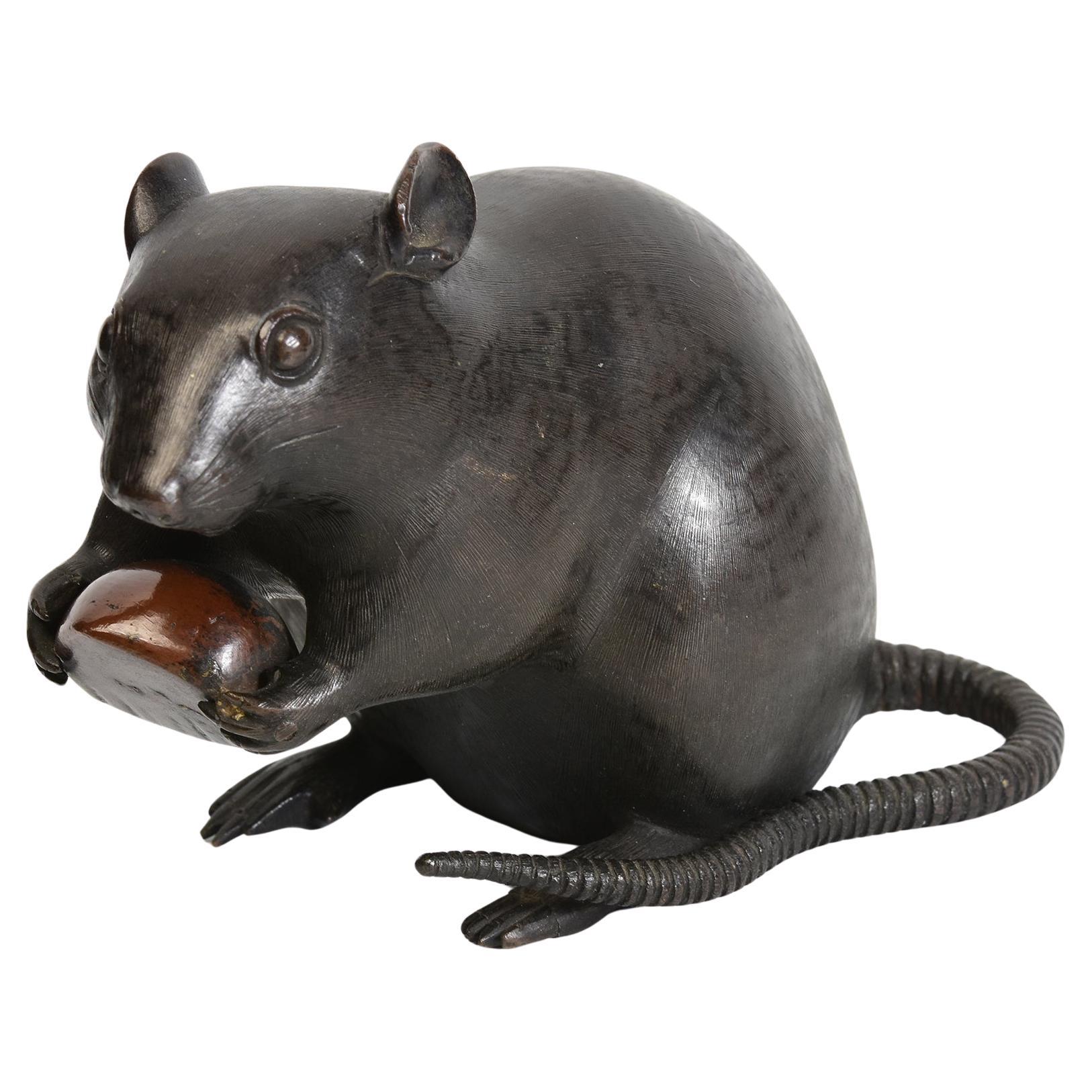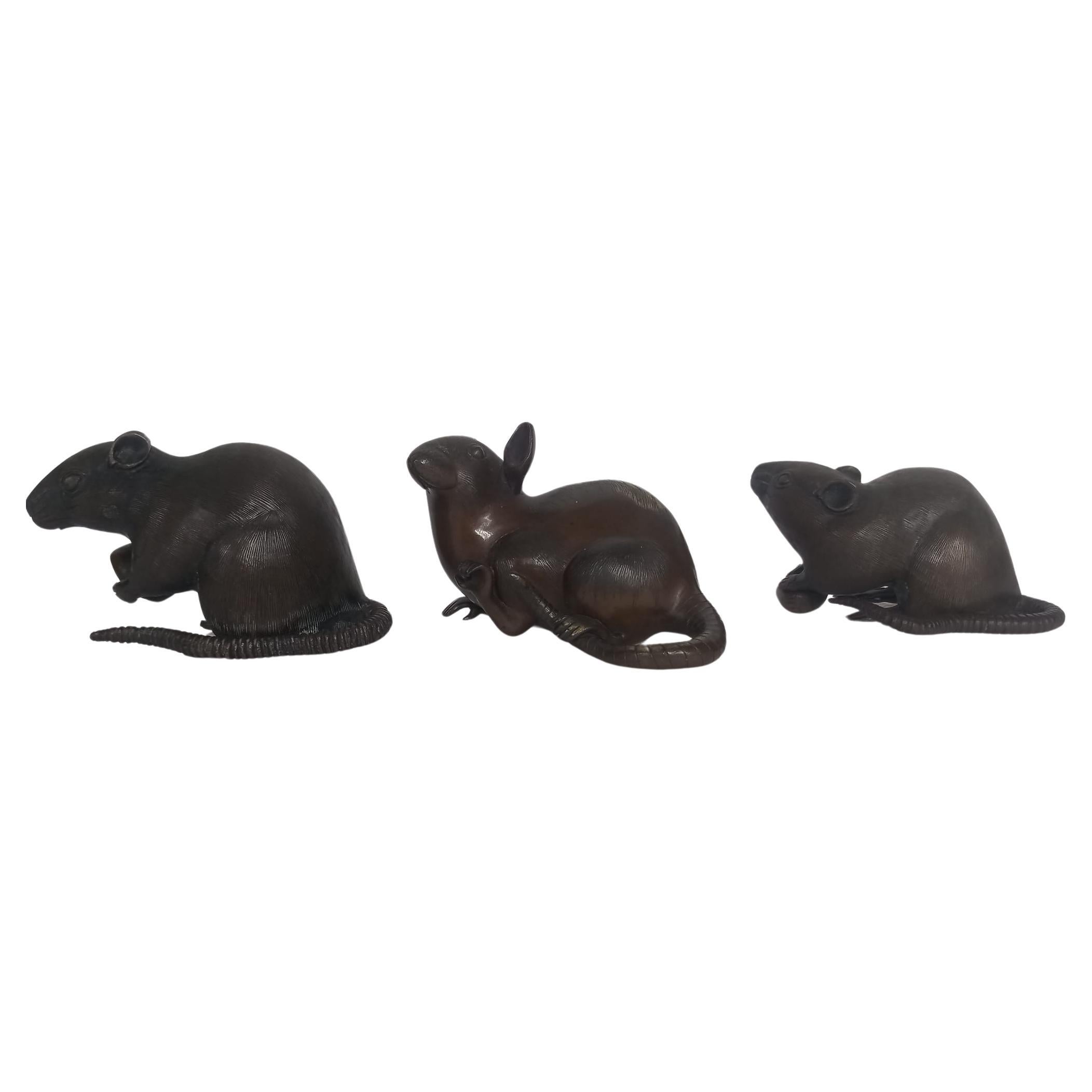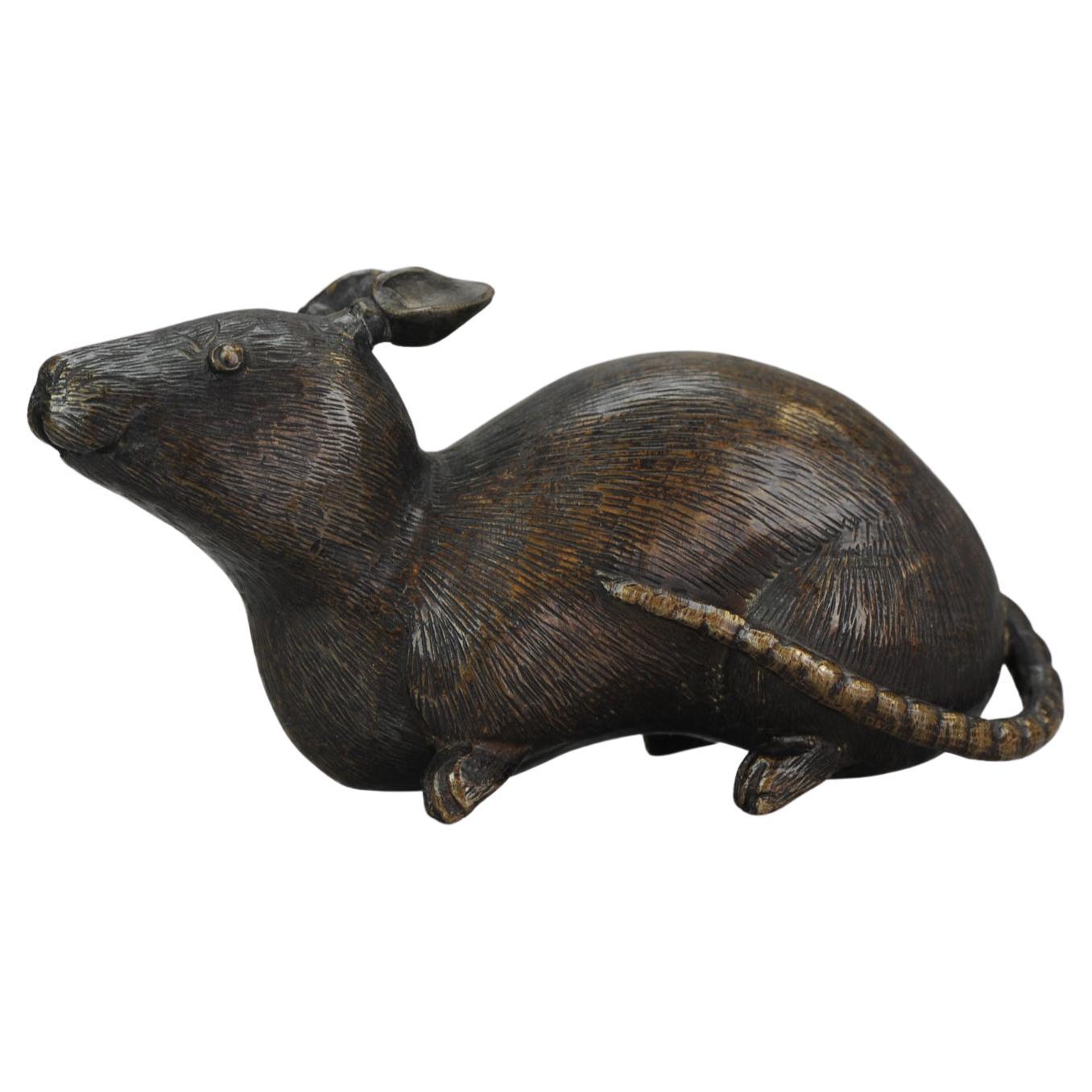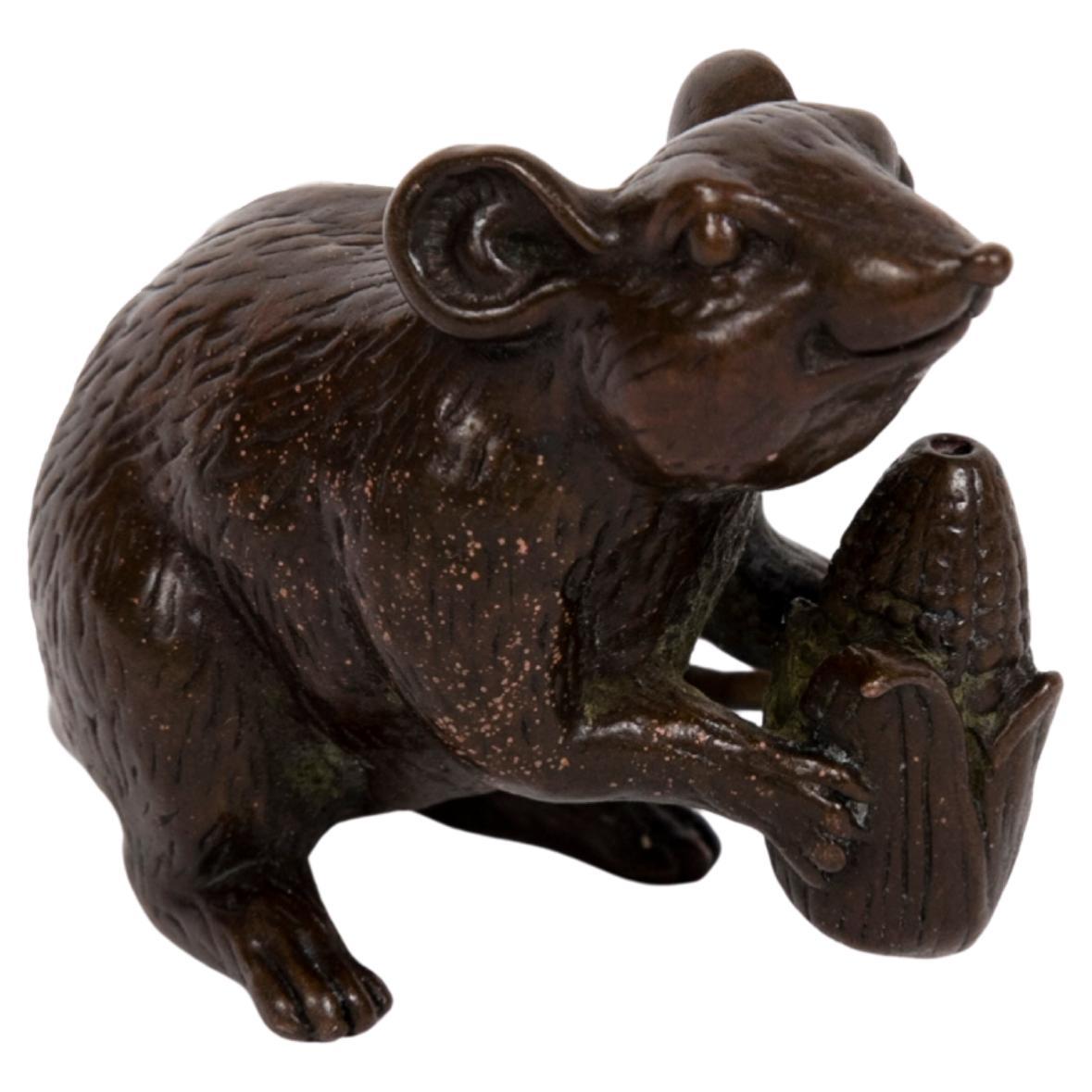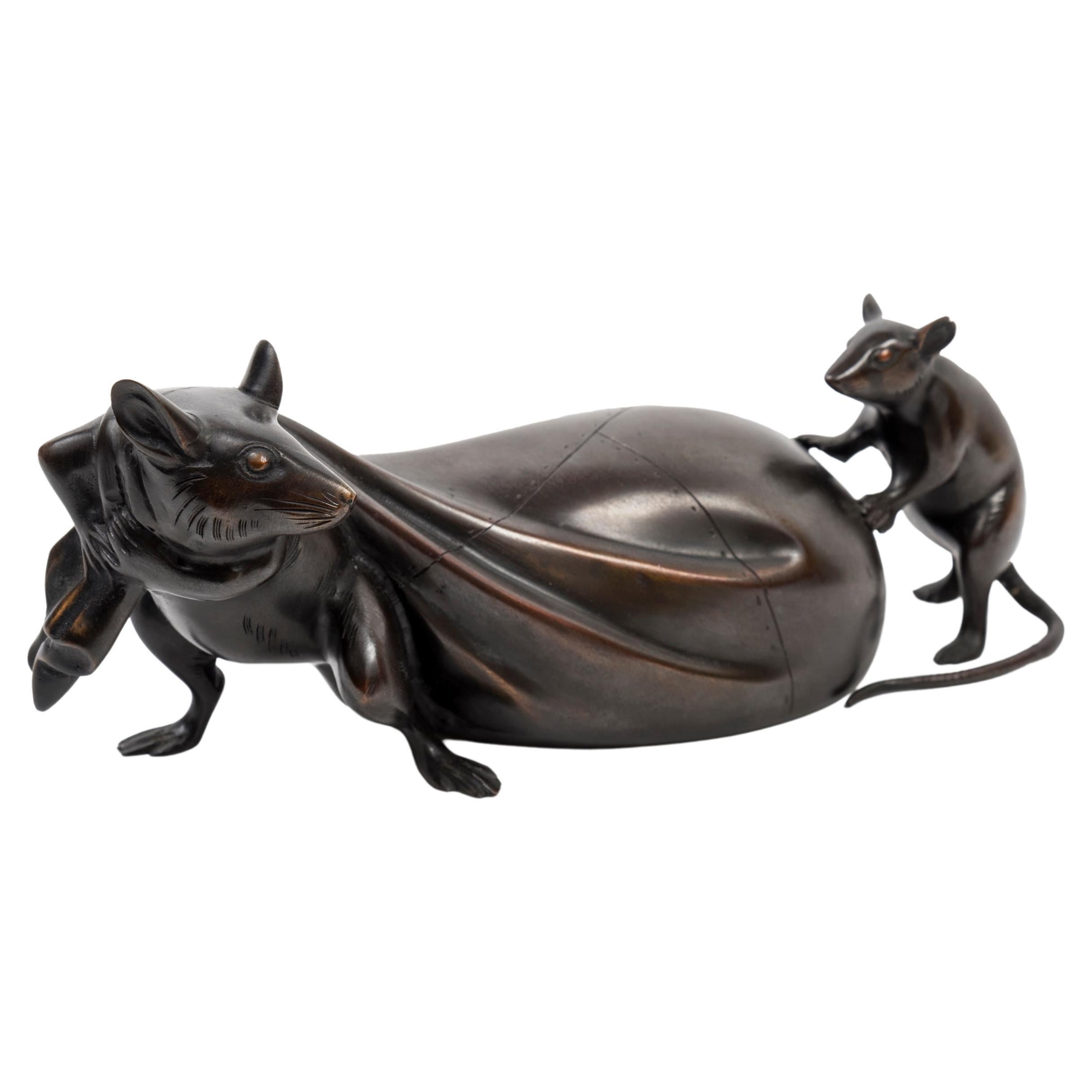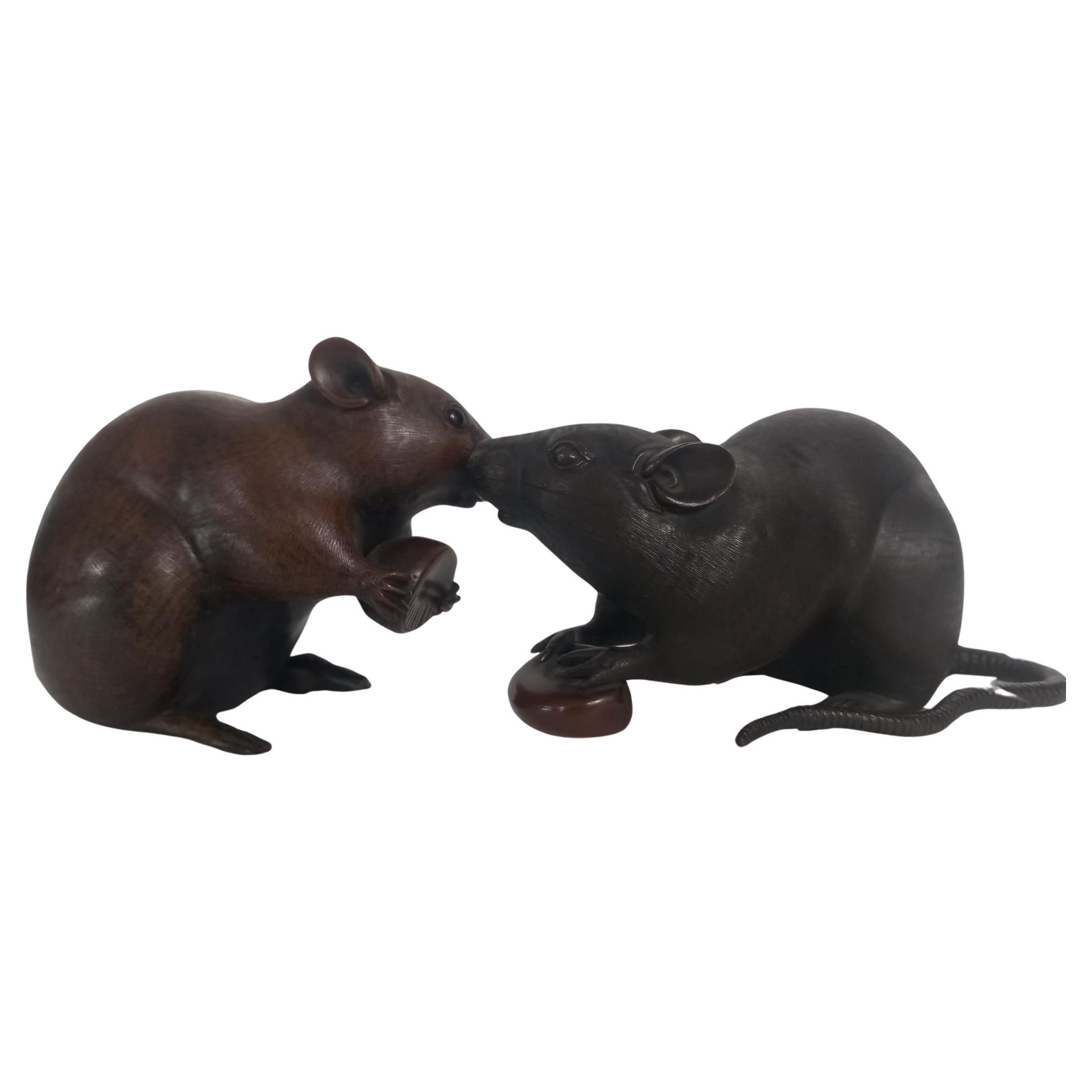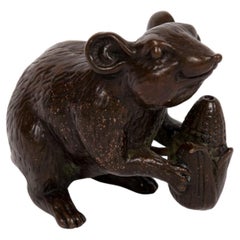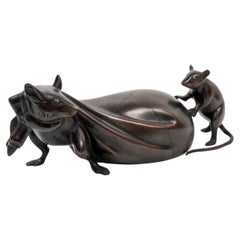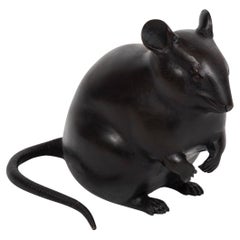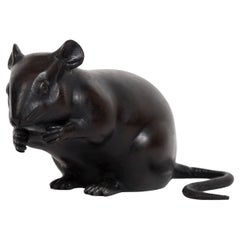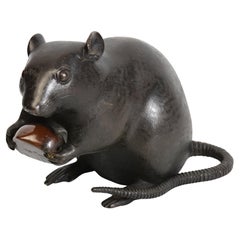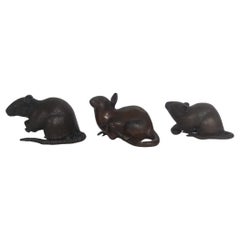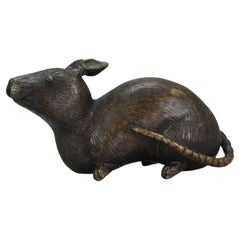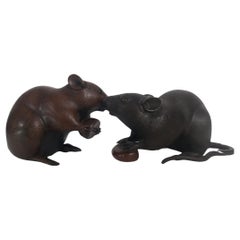Items Similar to Japanese Bronze Group of Mice, Pumpkin and Pomegranate
Want more images or videos?
Request additional images or videos from the seller
1 of 9
Japanese Bronze Group of Mice, Pumpkin and Pomegranate
$8,255.16
£6,179.19
€7,000
CA$11,361.45
A$12,663.52
CHF 6,644.11
MX$154,642.19
NOK 84,128.91
SEK 79,514.62
DKK 53,288.93
About the Item
Polychrome bronze of a group of mice around a pumpkin and a pomegranate. The five mice have a dark brown patina, while the hollowed-out gourd is dark brown and the split pomegranate is dark red.
Written in a cartouche on one of the pumpkin slices, "Shôsai Foundry" (???, shôsai-chû).
Japan – Meiji era (1868-1912)
Height: 6.4 in. (16.3 cm) – width: 7.8 in. (20 cm) – depth: 7.3 in. (18.5 cm)
- Dimensions:Height: 6.3 in (16 cm)Width: 7.88 in (20 cm)Depth: 7.29 in (18.5 cm)
- Materials and Techniques:
- Place of Origin:
- Period:
- Date of Manufacture:1868-1912
- Condition:
- Seller Location:PARIS, FR
- Reference Number:Seller: 2022-10641stDibs: LU8311234268782
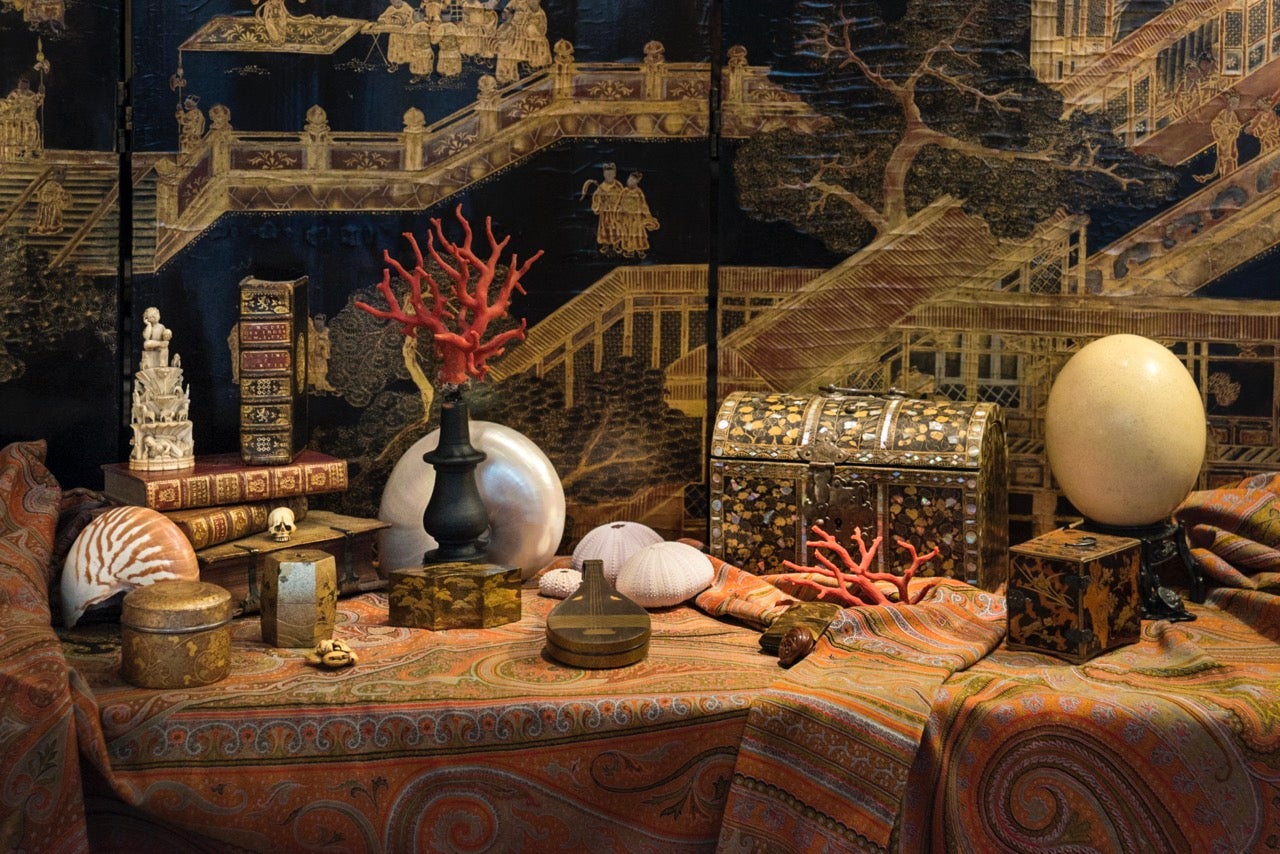
About the Seller
No Reviews Yet
Vetted Professional Seller
Every seller passes strict standards for authenticity and reliability
Established in 2013
1stDibs seller since 2023
Typical response time: Several days
- ShippingRetrieving quote...Shipping from: PARIS, France
- Return Policy
Authenticity Guarantee
In the unlikely event there’s an issue with an item’s authenticity, contact us within 1 year for a full refund. DetailsMoney-Back Guarantee
If your item is not as described, is damaged in transit, or does not arrive, contact us within 7 days for a full refund. Details24-Hour Cancellation
You have a 24-hour grace period in which to reconsider your purchase, with no questions asked.Vetted Professional Sellers
Our world-class sellers must adhere to strict standards for service and quality, maintaining the integrity of our listings.Price-Match Guarantee
If you find that a seller listed the same item for a lower price elsewhere, we’ll match it.Trusted Global Delivery
Our best-in-class carrier network provides specialized shipping options worldwide, including custom delivery.More From This Seller
View AllJapanese Bronze sculpture of a Mouse holding a korn knob
Located in PARIS, FR
An interesting bronze sculpture of a seated mouse holding a small corn knob. Realistic treatment of the fur, eyes, hears nose and mouth, its tail is curving on the left side of the s...
Category
Antique Late 19th Century Japanese Meiji Metalwork
Materials
Bronze
Japan mice treasure bag Meiji
Located in PARIS, FR
Japanese bronzewith brown patina representing two mice. One is pulling pulling a treasure bag. crouching down with its head turned to the left. While the other mouse is standing on i...
Category
Late 20th Century Japanese Japonisme Metalwork
Materials
Bronze
Big mouse standing bronze
Located in PARIS, FR
Huge sculpture of a rat with a dark brown patina, its pose reinforces the schematic
treatment. Its simple head and hardly figured moustache, its smooth and plump
body and very deta...
Category
Antique Late 19th Century Japanese Meiji Sculptures and Carvings
Materials
Bronze
Huge mouse lying down
Located in PARIS, FR
Huge sculpture of a mouse (or rat), with a rather dark patina, represented with a
schematic expression and realized with the hollow bronze technique. It is represented
in extension...
Category
Antique Late 19th Century Japanese Meiji Sculptures and Carvings
Materials
Bronze
$1,768
Japanese bronze sculpture of a ginseng root, ganodermas mushrooms growing on it
Located in PARIS, FR
Bronze sculpture representing a group of genoderma mushrooms developing on the long stem of a Ginseng root that is standing on two kakis. Logically this root would be Panax ginseng, ...
Category
Antique Late 19th Century Japanese Meiji Metalwork
Materials
Bronze
Japanese Bronze sculpture of a standing Mouse holding an Hazelnut
Located in PARIS, FR
It is a very convincing bronze sculpture of a mouse with a light brown patina, represented with an astonishing set of detail on its eyes, nose and fur. She is seated on her rear paws...
Category
Antique Late 19th Century Japanese Meiji Metalwork
Materials
Bronze
You May Also Like
19th C., Meiji, Antique Japanese Bronze Animal Rat / Mouse Holding A Chestnut
Located in Sampantawong, TH
Japanese bronze animal rat / mouse holding a chestnut with artist sign.
Artist signature is on the last photo.
Age: Japan, Meiji Period, 19th Century
Size: Length 14.4 C.M. / Width ...
Category
Antique 19th Century Japanese Antiquities
Materials
Bronze
$1,480 Sale Price
20% Off
Three small Japanese bronze rats, Meiji Period, two holding chestnuts
Located in London, GB
Three small Japanese bronze rats, Meiji Period, two holding chestnuts, each signed, approximately 9cm long and largest 6.5cm high and another small model of a rat, 9.5cm long
Category
Antique Late 19th Century Japanese Meiji Animal Sculptures
Materials
Bronze
Antique Bronze Meiji Okimono of a Rat Japan, 19th Century
Located in Amsterdam, Noord Holland
Nicely made artifact/Okimono of a Rat. In bronze with brown patina, representing a rat.
Okimono (置物, oki-mono) is a Japanese term meaning "ornament for display; objet d'art; decorat...
Category
Antique 19th Century Japanese Meiji Animal Sculptures
Materials
Bronze
$862 Sale Price
20% Off
A Japanese bronze of two rats (Meiji Period)
Located in London, GB
Set contains two: A Japanese bronze of a rat, Meiji Period, signed, approximately 9cm long x 8cm high and another Japanese bronze of a rat, signed, seated on its back legs, brown pat...
Category
Antique Late 19th Century Japanese Meiji Animal Sculptures
Materials
Bronze
$3,338 / set
Late 19th Century Japanese Bronze Okimono of a Rat Clutching a Chestnut, Meiji
Located in London, GB
Japanese bronze Okimono of a rat clutching a chestnut, Meiji period signed on the base.
Category
Antique Late 19th Century Japanese Metalwork
Materials
Bronze
Fine Japanese Meiji Bronze Okimono Sculpture of a Rat with Chestnut
Located in Shippensburg, PA
UNKOKU
Japan, late 19th/early 20th century
A Rat Grasping a Chestnut
Patinated bronze signed to underside
Item # 407CJE29P
A fine late 19th to early 20th century bronze okimono ...
Category
Antique 19th Century Japanese Meiji Animal Sculptures
Materials
Bronze
More Ways To Browse
Pomegranate In Art
Pomegranate Gold
Antique Mice
Japanese Gourd
Antique Copper Charger
Islamic Brass Tray
Japanese Bronze Incense
Mughal Copper
Japanese Censer
Chinese Archaic Bronze
Bronze Okimonos
Tibetan Copper
Arts And Crafts Cloisonne
Asian Bucket
Japanese Cloisonne Charger
Meiji Insect
Middle Eastern Copper Antiques
Chinese Bronze Censer
